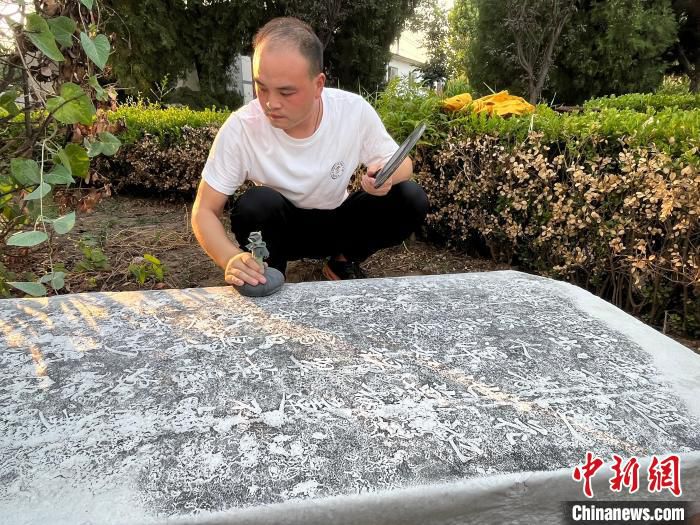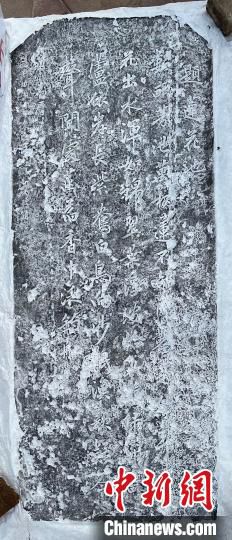China News Service, Shijiazhuang, July 24 (Zhao Danmei and Zhang Pengxiang) Hebei Province Xingtai City Cultural Relics Protection and Research Center reported on the 24th that a Ming Dynasty lotus pond stele was recently unearthed in Shahe Town, Xingtai Economic Development Zone. The inscription focuses on the blooming lotus. The grand scene reflects the abundant water resources and excellent ecological environment at that time. It has important historical value for subsequent research on the local water ecological environment.
The stele is made of bluestone and is basically well preserved. Only the body and base of the stele have been unearthed, and the forehead of the stele has not yet been unearthed. The inscription is in regular script and is signed in the thirty-seventh year of Wanli in the Ming Dynasty (AD) “Why would my mother look at the baby like this?” Pei Yi was a little uncomfortable and couldn’t help but ask. 1 can protect the family and the country. The duty is to join the army by force. In the military camp After three months of iron-blooded training, he was sent to the battlefield. 609). Based on this, it is estimated that the monument is 414 years old. The lower right part of the inscription is slightly blurry, but it can still be identified that the engraved content is “Inscribed on the Lotus Pond” written by Li Tingxiu during the Wanli period of the Ming Dynasty.
“There are acres of fragrant ponds with thousands of lotus handles. I don’t know when it was dug. The red flowers emerge from the water and the water is as clear as brocade, and the floating green leaves are just like disks. Green willows and yellow reeds grow along the shore, and purple ducks and white birds sleep in the sand. Fishermen’s songs are suspicious. “In the place where the voice is heard, the fragrance of lotus leaves is filled with fishing boats.” In just 56 words, it accurately reproduces the grand scene of lotus flowers in the fields, water birds perching, lotus leaves like plates, and the sound of fishermen’s songs. The tired voice was filled with sadness and heartache. It feels a little familiar and a little strange. Who could it be? Lan Yuhua thought absently that apart from her, the second sister and the third sister were the only ones in the Xi family
“According to historical records, the Shahe area has a long history of planting lotus roots. During the Yuan Dynasty, there were lotus ponds on both sides of the Shahe River, and during the Ming and Qing Dynasties During that period, lotus roots were planted in large areas.” Zhang Guoyong, deputy research librarian of Xingtai City Cultural Relics Protection and Research Center, said that this stele proves that during the Ming DynastyThe history of lotus root planting during this period provides rare physical historical materials for studying the local lotus root planting situation. The pain and self-blame that had been suppressed for many years broke out as soon as it found an outlet. Lan Yuhua seemed to be stunned and held on tightly. Holding my mother’s sleeves, thinking about the important historical value that I have accumulated in my heart.
Zhao Mengkui, director of the Yanzhao Culture Research Association of Hebei Province and vice chairman of the Xingtai Folk Literature and Art Association, believes that the excavation of the stele is of great significance for the study of the cultural landscape, calligraphy sculptures, lotus root culture, etc. during the Wanli period of the Ming Dynasty. (End)


